Purple Tigress (Fox)
Yankee Girl <Kitty Kelly> (Four Star Publications)
Yankee Girl <Lauren Mason> (Superior Publication, then reprinted in U.S. by I.W. Publishing)
Results 16 to 30 of 59
-
07-18-2019, 07:58 AM #16

-
07-18-2019, 08:34 AM #17

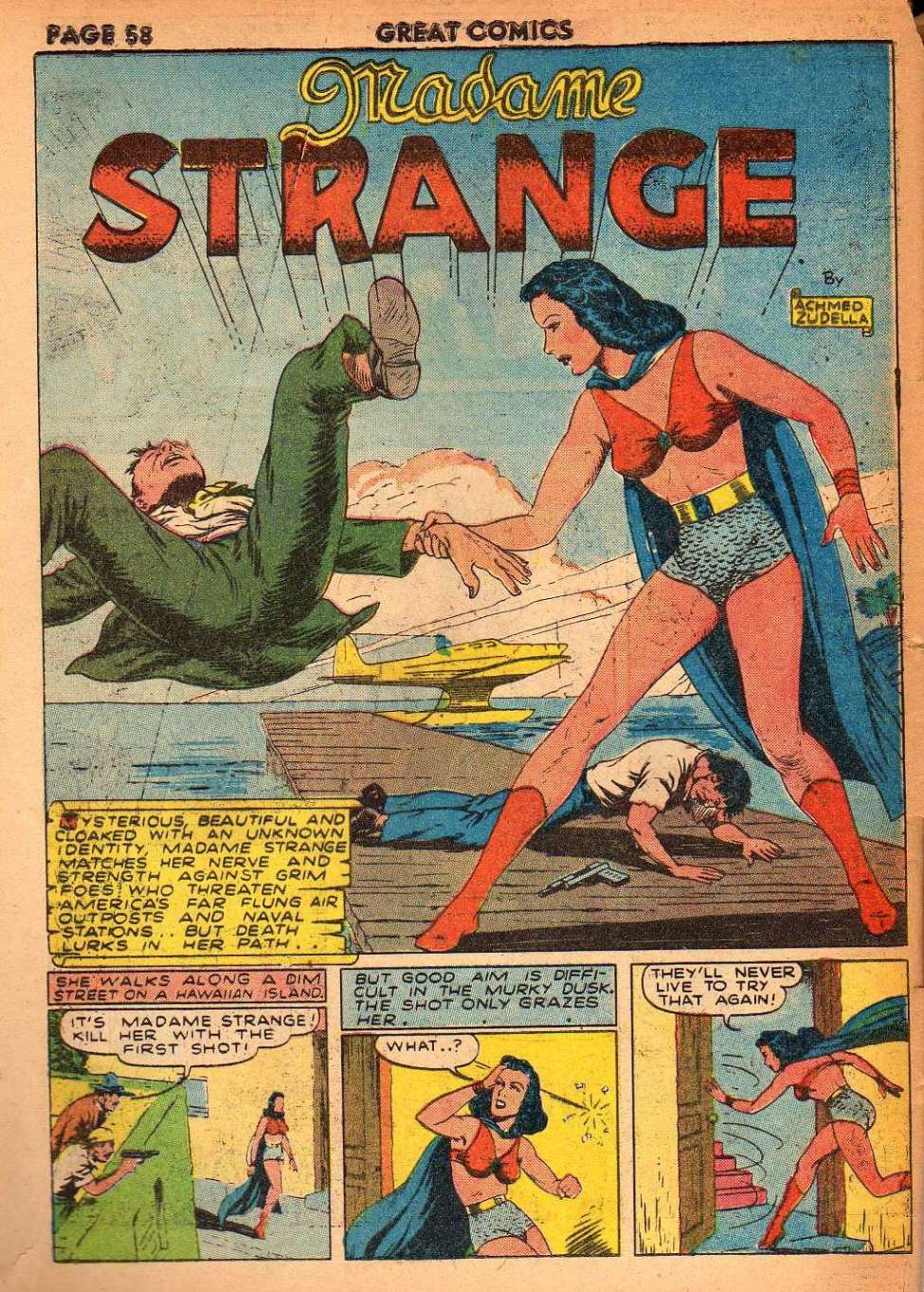
Madame Strange (Great Comics Publications)

Pat Patriot (Lev Gleason)
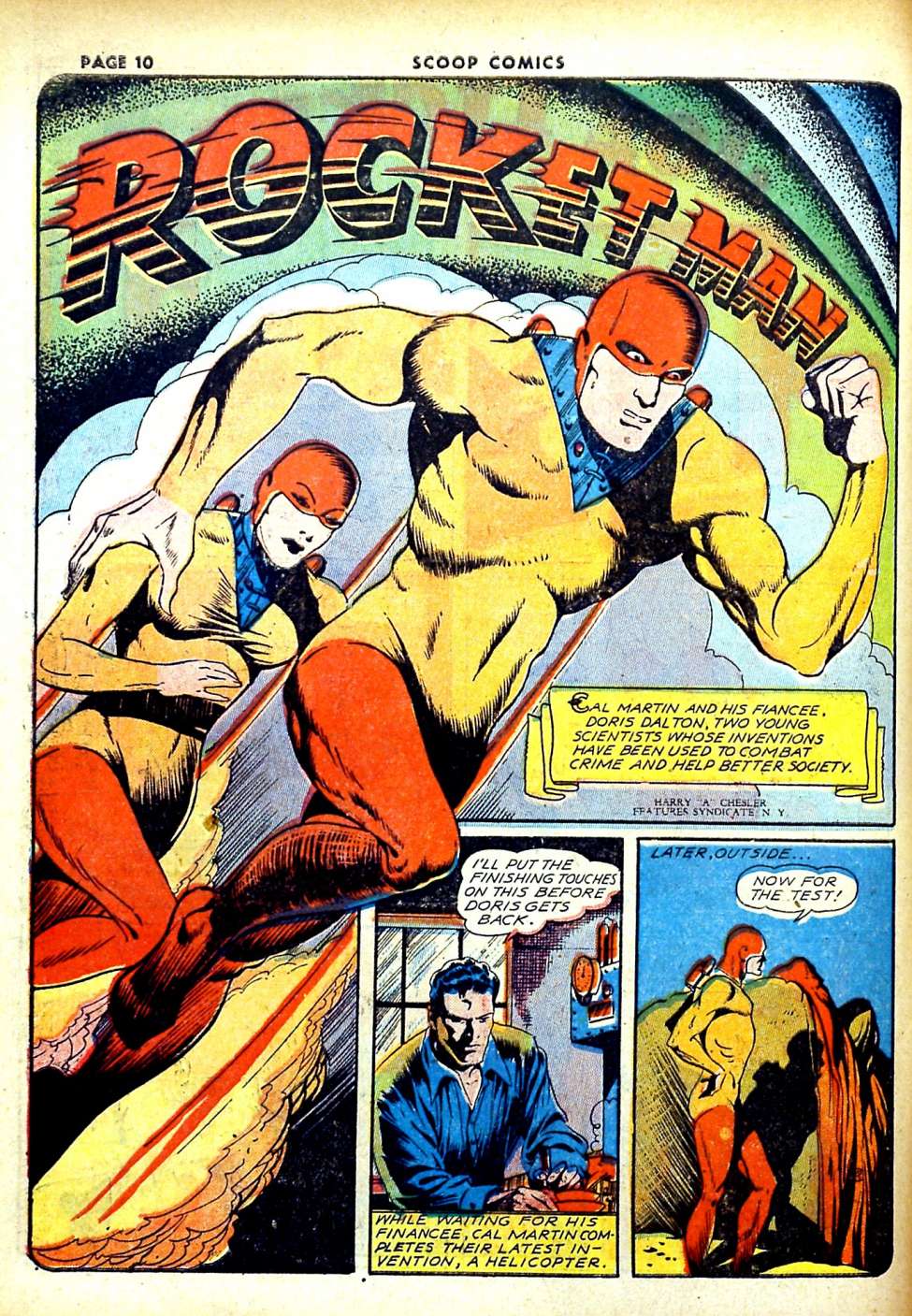
Rocketgirl (Chesler / Dynamic) - later renamed "Jet Girl" when used by AC Comics in the 1990s
-
07-18-2019, 09:39 AM #18
-
07-18-2019, 10:22 AM #19


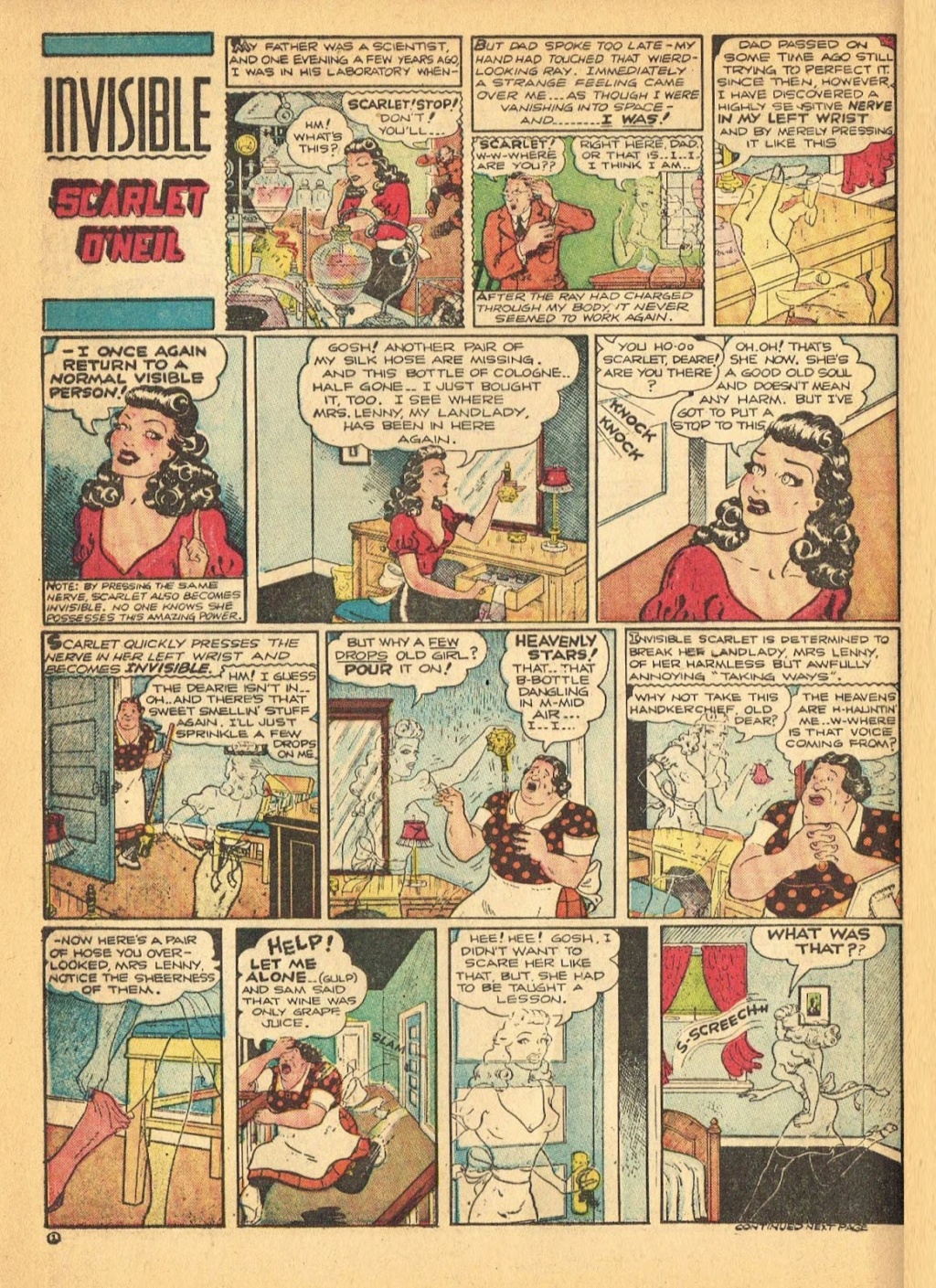
Invisible Scarlet O'Neil began as a comic in the Chicago Daily Times, with those stories then published in Famous Funnies by Eastern Color.
-
07-18-2019, 10:37 AM #20Retired

- Join Date
- Apr 2014
- Posts
- 18,747

Bob Oksner did the comic strip MISS CAIRO JONES, which inherited the slot left by MISS FURY, which is why they added "Miss" to the strip's title--the strip was reprinted in one comic book from Croydon in 1945. At the same time, Bob Oksner was working as the art director at Ned Pine's comic books, where he drew (and maybe wrote) some of the Miss Masque stories.
-
07-18-2019, 10:50 AM #21Retired

- Join Date
- Apr 2014
- Posts
- 18,747

Lily Renée was an artist (and maybe writer) on Senorita Rio. The young artist had escaped from Nazi occupied Austria and eventually made her way to the U.S.A. where she got a job working at Fiction House. The comic book, LILY RENÉE, ESCAPE ARTIST (Graphic Universe, 2011) by Trina Robbins, Annie Timmons and Mo Oh, tells the story of her young life and the struggles she endured.
-
07-18-2019, 11:32 AM #22
-
07-18-2019, 01:11 PM #23
-
07-18-2019, 01:20 PM #24

By the way, the Black Widow feature from Helnit Publishing (Holyoke later gained control of Cat-Man Comics) appears to only have had a single appearance, in Cat-Man Comics #6 (May 1941).
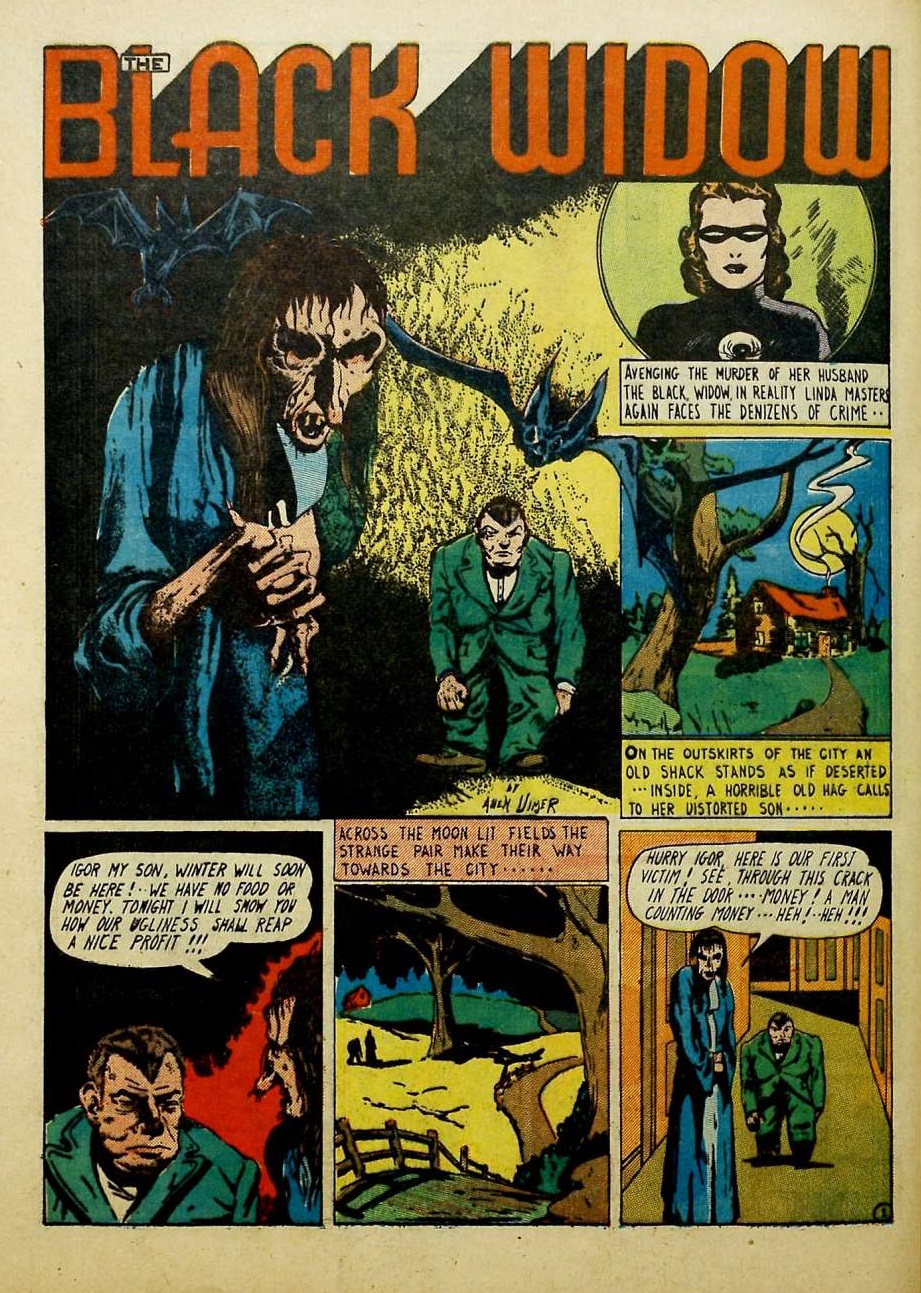
Miss Espionage, from Narrative, had two appearances in that company's Power Comics in 1945.
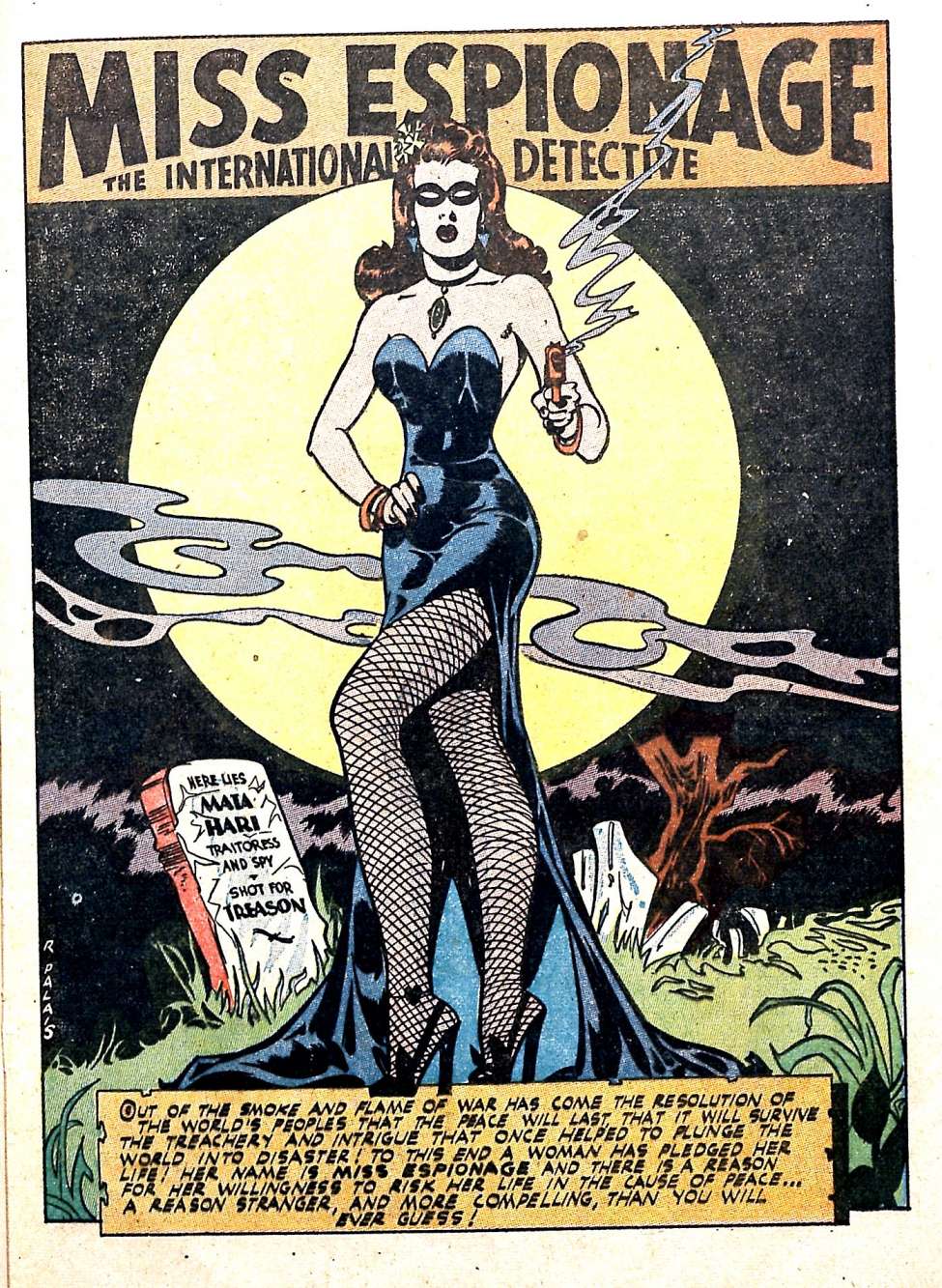
-
07-18-2019, 03:19 PM #25

I don't claim to know as an absolute fact what a superheroine is and isn't, but I was thinking something along the lines of a female that either uses an alter ego, costume, or supernatural powers (or at least extraordinary fighting skills) while fighting against criminals, though not necessarily all three. Basically, something less civilian, and instead something that lends itself to being more fantastical. That's why I hesitated to include characters such as Betty Bates, Gail Garrity, and Lois Lane, which came across to me as more civilian-esque overall even though they have helped in going up against crime. It's also why I included Fantomah on there, even though no other jungle ladies appear on the list. Again, I don't claim to know the is and isn'ts with superheroines, but that's why forums like these can help sort out things in a more clear way. Who knows, the more people talk on here and argue towards having more names like Lois Lane on the list, the more such names may end up on it, perhaps even more than I had imagined at the start. I'm pretty flexible after all. Haha.
Last edited by Electricmastro; 07-18-2019 at 03:41 PM.
-
07-18-2019, 03:37 PM #26Retired

- Join Date
- Apr 2014
- Posts
- 18,747

It's kind of a grey area with the male heroes, where you could say that a mystery man like Doc Savage or the Shadow isn't a super-hero, even though they have super abilities. So where do you draw the line between them?
You could argue that Rulah the Jungle Goddess is more super than Black Cat.
-
07-18-2019, 04:01 PM #27

Yep, I think that no matter what, it's always still pretty subjective. It seems to always go back to Superman as to what a superhero is, yet at the same time, Batman is also considered a superhero even though he doesn't have supernatural powers. And in speaking of pre-Golden Age heroes like Doc Savage and the Shadow, there was also Jerry Siegel and Joe Shuster's previous hero that's Doctor Occult. I actually thought to include Doctor Occult's assistant Rose Psychic on the list, but after I decided to just keep it at a 1938-1955 timeframe, I ultimately didn't, as she had debuted in 1935.

Last edited by Electricmastro; 07-18-2019 at 04:12 PM.
-
07-18-2019, 05:01 PM #28

By the way, Miss Masque first appeared in Exciting Comics published by "Better Publications, Inc." (Better / Standard / Nedor / Pines) starting in 1946.
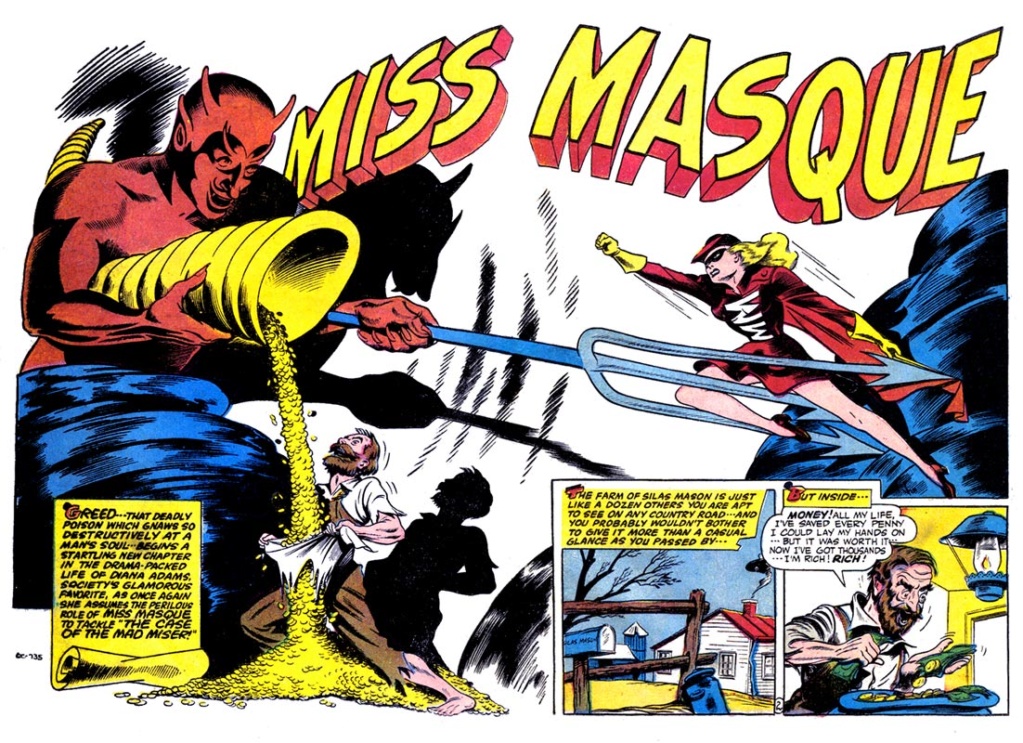
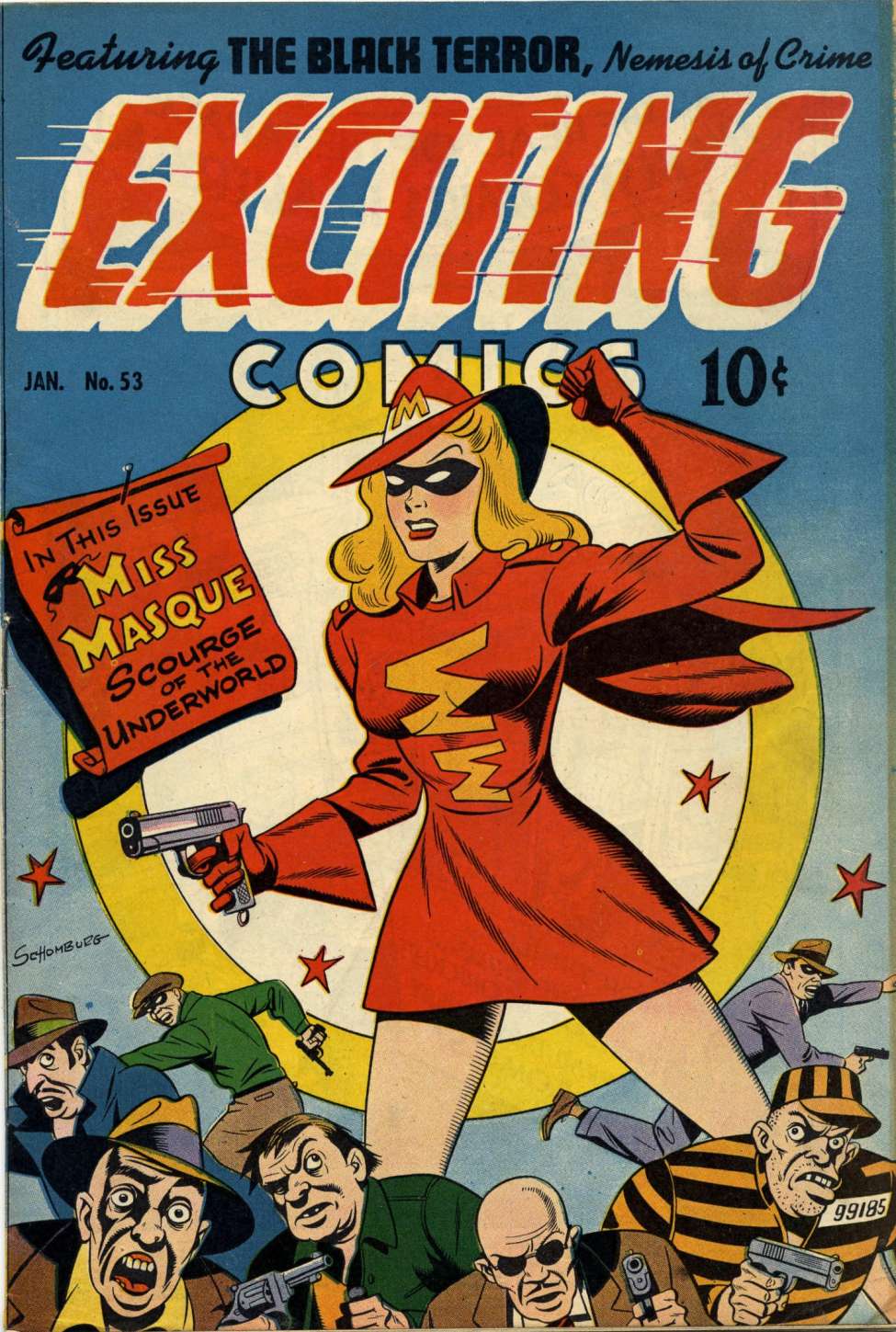
She also appeared in AC Comics titles (like FemForce) starting in the 1990s.

Originally, she was more of a masked adventuress with a pistol.
But when Dynamite used the character in their Project Superpowers books staring in 2008, they changed her name to "Masquerade" and gave her powers.
-
07-18-2019, 05:21 PM #29

Wildfire was a superheroine from Quality Comics, appearing in Smash Comics #25 - 37. Carol Vance was orphaned by a forest fire but, received her powers to control or create flames and fly from the god of fire after he rescued her. She was later adopted by the wealthy Martin family, and the teenage super heroine decided to use her powers to combat not only criminals, but also saboteurs and even supernatural menaces.
DC obtained the rights to Wildfire along with the rest of the Quality stable. Roy Thomas planned to use her in All-Star Squadron, but was vetoed because DC already had a character named Wildfire (in LSH). Instead, Roy created the character of Firebrand to fill the Wildfire role.

-
07-18-2019, 05:40 PM #30

Slight clarification: Roy took an existing Quality Comics character (Firebrand, who was really Rod Reilly) from the Golden Age and used that name for a "new", female Firebrand (Danette Reilly, who became Rod's sister) and gave her fire powers. (The Golden Age version had no powers.)




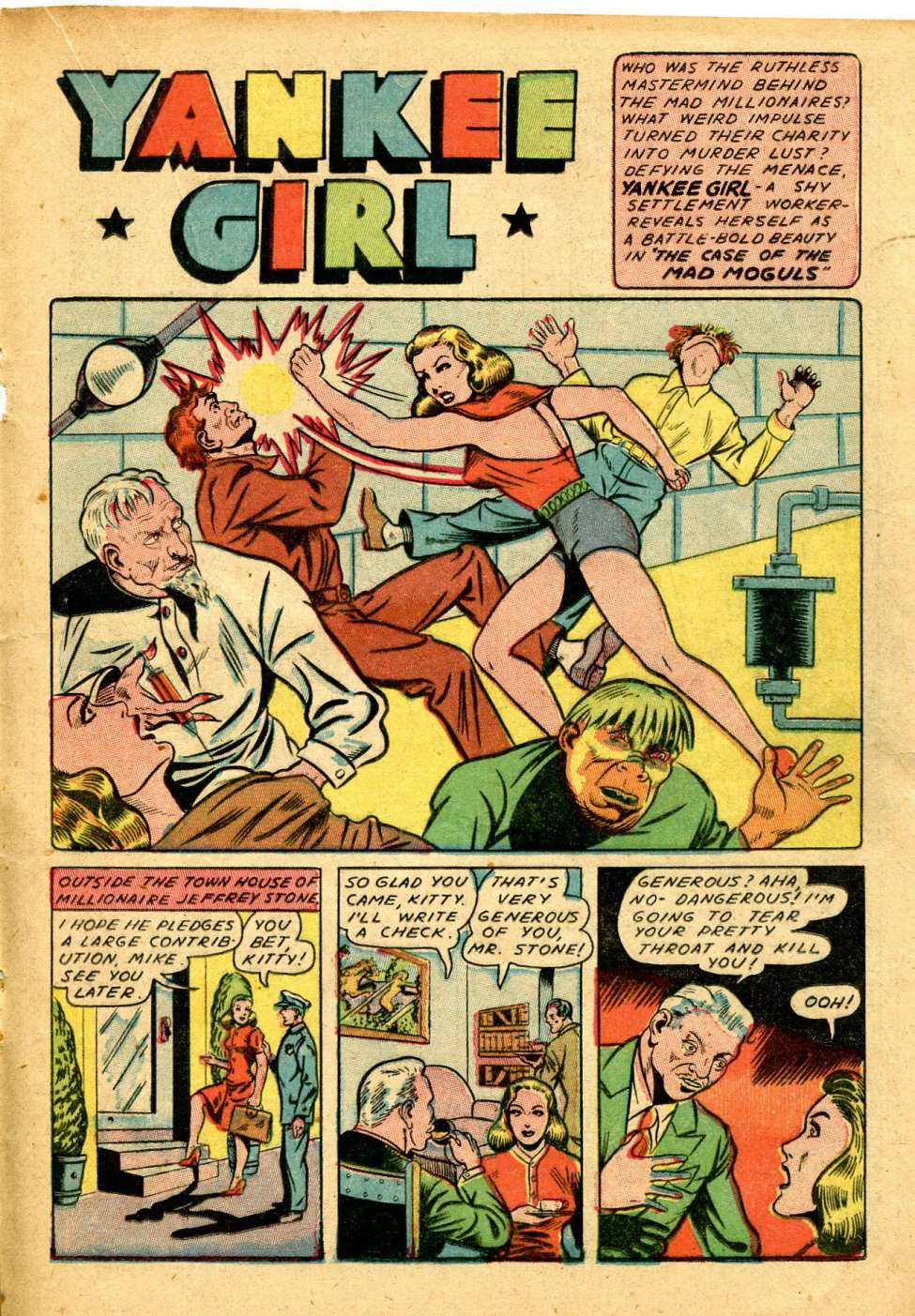
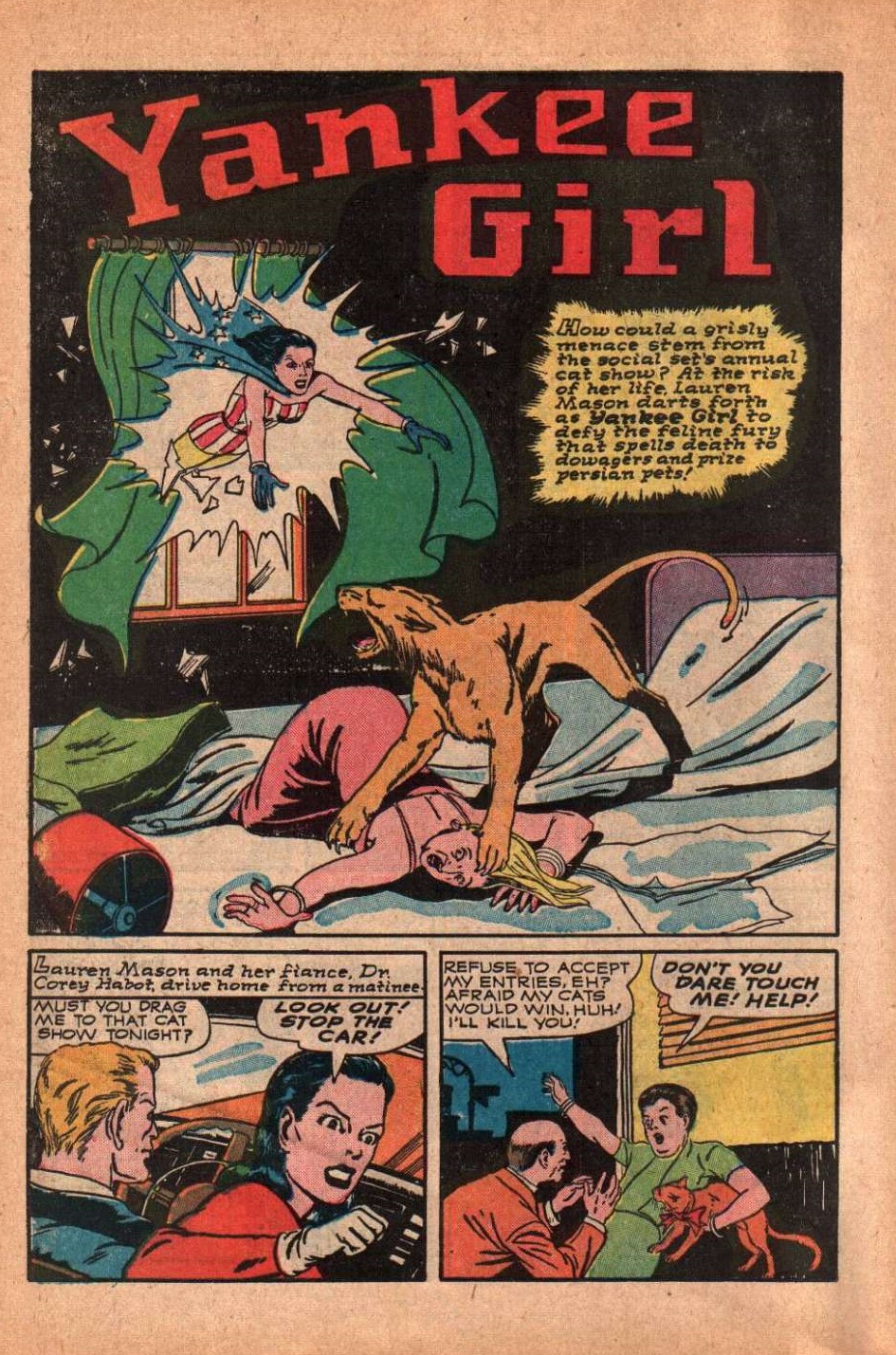

 Reply With Quote
Reply With Quote



